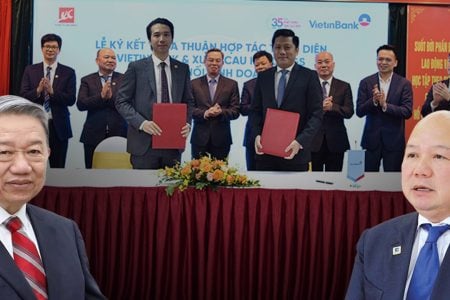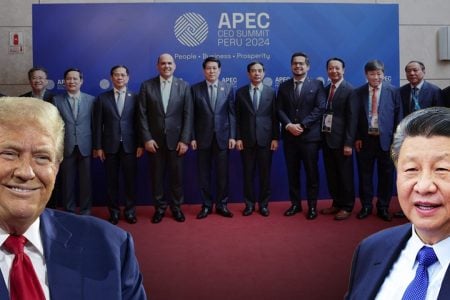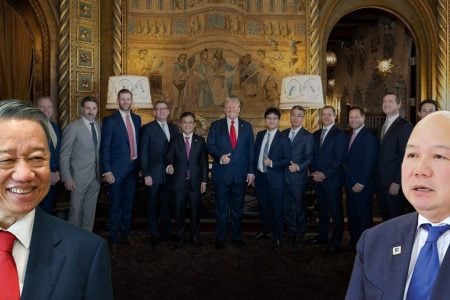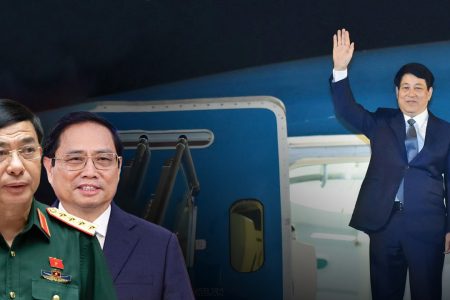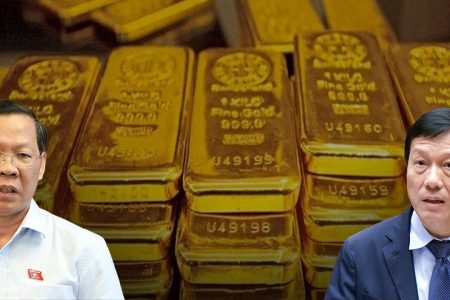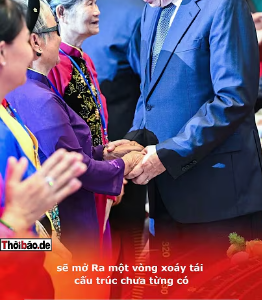The COVID-19 pandemic that broke out in early 2020 will be in the world’s history not only as an epidemiological crisis leading to the global economic recession but it will also blow up US-China diplomatic tensions which have already deteriorated by the trade war. The East Sea (South China Sea), in which both powers have important interests directly related to national security, has become an indispensable front for the two sides to show strength and restrain each other.
China continues to promote illegal sovereignty claim in the South China Sea with a strategy that has been going on since 2010 and despite the COVID-19 pandemic, this campaign is still ongoing.

Since 2010, China has deployed marine militia, along with encouraging fisheries in disputed areas to assert sovereignty.
2012 was called a pivotal year when China officially exercised illegal administrative sovereignty over the South China Sea with the establishment of „Sansha City.“
Specifically, on June 21, 2012, the State Council of China approved a decision to set up „Sansha.“ On July 17, 2012, the People’s Council of Hainan Province approved a decision to establish the „Sansha People’s Council.“
On July 19, 2012, the Central Military Commission of China officially decided to establish the „Military Command Agency“ of the so-called „Sansha City“ based on Phu Lam Island in the Paracels which has been administrated peacefully by Vietnam for centuries.
On July 21, 2020, China organized the election of 45 representatives of the „Sansha People’s Council.“ Two days later, the first session of the „Sansha People’s Council“ elected Tiet Kiet as mayor. And on July 24, China held a ceremony to set up the so-called „Sansha city.“
And recently, on April 18, 2020, the State Council of China issued a decision to establish two new „districts“ under the „Sansha City„: Xisha in Paracels and Nansha in Vietnam’s Truong Sa (Spratlys)
Not only that, China has also acted aggressively and intimidated to threaten countries with similar disputes in the South China Sea when it submerged Vietnamese fishing vessels in Hoang Sa in early April this year and sent Chinese survey ships HD8 recently to operate within Malaysia’s territorial waters.
In an interview given to RFI, Research Director Benoît de Tréglodé of the Institute of Strategic Studies of the French Military School (IRSEM) identified China’s aggressive actions in the COVID-19 pandemic was not immediate but in a pre-existing Chinese campaign.
He identified three recent events including the sinking of Vietnamese fishing vessels in early April 2020 in the Paracels; the establishment of two new districts Xisha and Nansha in Sansha city, as well as the recent survey of HD 8 ship in Malaysia’s territorial waters are parts of China’s long-term maritime policy in the region.”
“For example, when a Vietnamese fisherman’s fishing boat was sunk in early April 2020, this incident must be set in a long-standing context, particularly since 2014 when the HD981 rig crisis occurred.“
He further analyzed:
„Going back to the recent historical context, we see the media have talked a lot about China’s establishment of the „Sansha City“ in 2012. This is Beijing’s response to the approval of the Law of the Sea by Vietnam’s National Assembly in which Vietnam lists the Paracels and Spratlys as its territories. Since then, China has claimed administrative rights. And that claim was concretized by the establishment of two „districts“ of Xisha and Nansha. Another important point to note is the „Sansha city“ when it was established by China in 2012, despite the claims of its partners and neighbors, headed by Vietnam, has about 400 inhabitants, but now has 1,800 people, mainly living in the northern Paracel area.
It is true that we clearly see policies such as population growth, infrastructure construction … but keep in mind that that policy is not necessarily a chance of the disease situation this year but actually, a long-term strategy, which has been a continuous feature of China since 2010. The deployment of HD8 to the waters of Malaysia in the same way as it happened to Vietnam.
Therefore, I do not see a very significant increase during the COVID-19 crisis, but a continuation of China’s long-term policy.”
And to cater to this hegemonic ambition, China still increased its defense budget despite the COVID-19 pandemic impact.
During the opening session of the Chinese National People’s Congress on May 22, China announced that it would maintain the defense budget’s growth momentum in 2020 at 6.6% compared to last year, down slightly from 7.5% in 2019.
China’s defense budget for this year is expected to be 1.268 billion yuan ($178.16 billion), the second largest level of investment in the world after the US, according to Reuters.
In 2019, China aims to increase its military budget by 7.5%, while the economic growth of the whole year is only 6.1%.
This year, China’s economic growth in the first quarter fell 6.8% from the same period last year due to the impact of the COVID-19 epidemic. Yet, despite the sluggish performance of the economy, China only slightly reduced its target for military spending, showing its ambition to continue its defense program.
It should be noted that China only publishes raw data on military spending, not split each part for different forces. Observers also claim that the figure given by Beijing is lower than the actual budget.
The move shows the country’s active level in efforts to strengthen military capabilities.
The Chinese military said it needs more weapons and resources to deal with many threats at the same time: the uncertainty situation was constantly changing both inside and outside the territory. But at the forefront of threats is a growing escalation of relations with the US, approaching the risk of conflict especially on the two fronts: the South China Sea and the East China Sea.
On the US side, in the face of aggressive Chinese actions, Washington has increased its presence in the South China Sea.
According to the South China Morning Post on May 19, the US has increased its military activity in the air and at the „doorstep“ of China in the first five months of 2020 by more than three times compared to the whole of 2019.
While 2019 was considered the year the US set a record for patrolling in the South China Sea with seven patrols within a 12-nautical-mile area of artificial islands occupied by China in the South China Sea.
Not only the navy is mobilized, the US also mobilizes the air force in combat readiness. In early May, the US sent B-1B bombers back to Guam to support US on-site forces as well as allies and partners in the Pacific.
These actions are also carried out according to the US Indian-Pacific strategy.
The Shangri-La Dialogue in Singapore in June 2019 in the India-Pacific Strategic Report presented by the US Secretary of Defense, China is one of three key topics raised. Accordingly, the US considers China to be the greatest threat to security in the region. This is considered a document that shapes the current US policy framework in Southeast Asia.
Commenting on China’s understanding of how to take advantage of Vietnam’s “Four Nos” policy to increase its activity more and more aggressively, Mr. Benoît de Tréglodé said that Vietnam has taken new steps in the South China Sea issue.

He analyzed:
“The previous “Four Nos” policy was the “Three Nos” policy of Vietnam: Not joining the military alliance; do not link with one country against another; not allow foreign countries to set up military bases or use Vietnamese territory to oppose other countries. This policy was revised in November 2019 in Vietnam’s Defense White Paper with a fourth „No“ which is “not using force or threatening to use force in international relations,” including Do not use force to resolve territorial disputes in the area.
The content is still quite traditional, it is the making of defensive statements to protect the sovereignty rights that are threatened by field encroachments in China’s maritime policy that they I mentioned above.
In this regard, it should be mentioned a point, very topical: Hanoi is raising the possibility of threatening Chinese partners and telling the international community that Vietnam is willing to do as the Philippines used to do, meaning is a reference to international justice in order to highlight the disputes over territorial sovereignty between Vietnam and China. The problem is that in 2014, the Vietnamese government showed signs that it could be sued, but since then nothing has really happened.
Thoibao.de (Translated)









